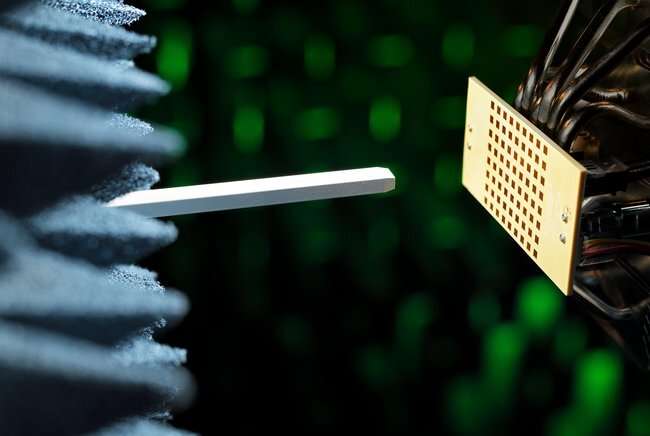Enhancing the performance of future 5G cellular networks

Society relies heavily on wireless communication. Many individuals have access to at least one mobile phone; in fact, there are more mobile phones in use than the current population of the planet. Within five years, predictions suggest that there will be more than four billion additional devices connected to cellular networks. As a result, data traffic will grow, leading to congestion of the current 4G network. To mitigate this issue, the world is turning to fifth generation (5G) mobile communications, but this will require a significant change to the antenna system. Electrical engineer and Ph.D.-candidate Teun van den Biggelaar has developed an antenna system based on a phased array approach that allows for reliable communication over a 5G network. Teun received his Ph.D. cum laude on November 11th at TU/e.
It's quite likely that you've heard the term 5G in recent months in relation to advancements in our future communications network. But what exactly is 5G?
"Previous cellular networks were 'one-system-fits-all' solutions. 5G is a paradigm shift in the mobile communications industry as different frequency bands can be used for different applications. In Europe, these bands are around 700 MHz, 3.5 GHz and 26 GHz," says Van den Biggelaar. "Each band has its own functionalities and implications. In the Electromagnetics Group at TU/e led by Professor Bart Smolders, we focus on 5G networks in the 26 GHz band, often called the 5G millimeter-wave (mm-wave) frequency band."
This mm-wave frequency band provides a large bandwidth and allows for very high data rates. In comparison to 4G, the data rate can be increased by a factor of 10 to 100.
Decreased communication range of 5G
Exploiting the 5G mm-wave frequency band comes at a cost: the communication range of 5G mm-wave frequencies is considerably lower than that of 4G frequencies, as 5G mm-wave frequencies are more easily blocked by objects like trees and buildings. This decrease in communication range can be solved by installing more base stations, which would allow for the use of smaller cells in a 5G mm-wave network in comparison to the cells used in a 4G network. An additional measure to compensate for these losses is to increase the so-called gain of the antenna system by using phased array systems.
Developing a 5G phased array system
Typical antennas used in 4G systems have a relatively low gain, meaning that its radiation is not focused in one particular direction. If multiple antennas are used in an antenna array, an interference pattern results, and the radiation can then be focused in one direction. This leads to a system with a larger antenna gain that overcomes the increased losses associated with the 5G mm-wave band. By adjusting the signal to each antenna element in a smart way, the direction of the radiation can even be changed and can be used to follow a moving user.
Such a phased array system is most likely to be employed in 5G cellular networks. For his Ph.D. research, Van den Biggelaar developed a 5G antenna system in collaboration with NXP Semiconductors in Nijmegen.
Characterization of antenna systems
"Compliance of antenna systems with regulations outlined by standard development organizations and governmental institutes is of utmost importance to ensure reliable communication and to mitigate health risks," notes Van den Biggelaar. "Accurately characterizing antenna systems is therefore extremely relevant."
The antenna and the electronics in conventional 4G base stations can be designed and characterized separately. At 5G mm-wave frequencies, this is impractical as the individual antenna elements are very small and are typically highly integrated. In collaboration with the National Institute of Standards and Technology (NIST) in the United States, Teun has developed methods to accurately characterize 5G mm-wave (integrated) antenna systems. These methods lead to less measurement errors and uncertainty, which will ultimately enhance the reliability of the future 5G cellular network. Since these methods are also valid for higher-frequency applications, Van den Biggelaar's work can also be applied to 6G mobile communications.
More information: Over-the-air characterization of millimeter-wave integrated antenna systems. research.tue.nl/en/publication … ave-integrated-anten





















